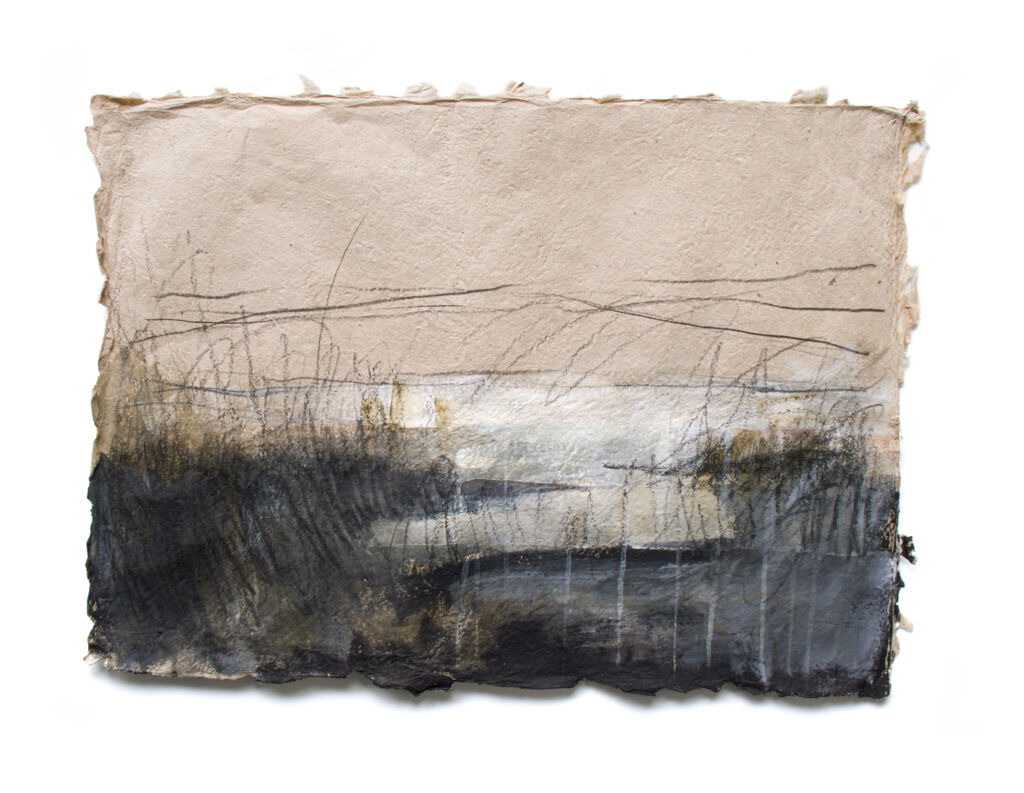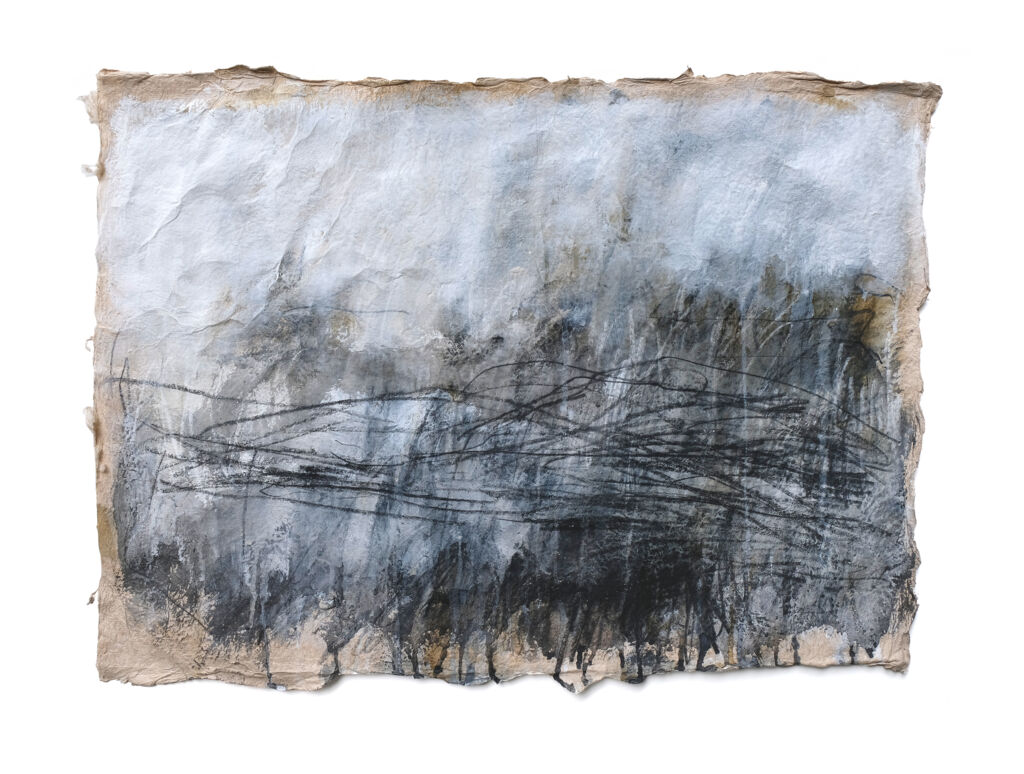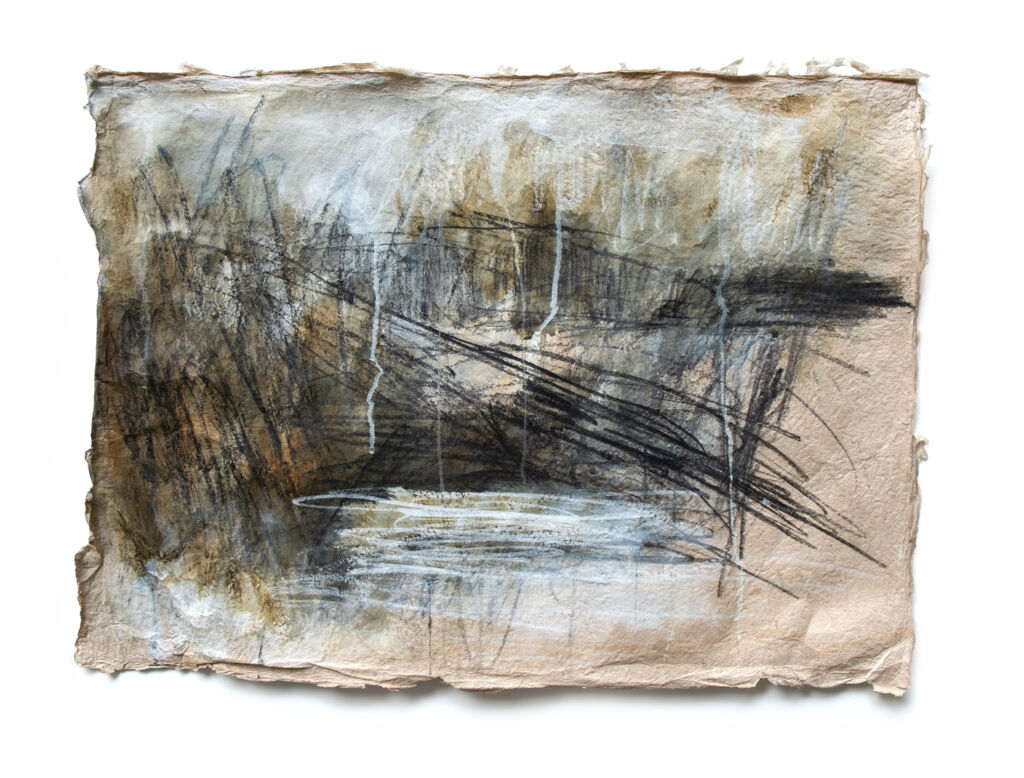
Folds of Water
Exposing Oneself to What Happens
Text: Dr. Klaus Speidel, September 2024
Translation: Ross Reekie
The visions of encountered nature in Jakob Kirchmayr's exhibition "Folds of Water"
They drink the springs,
drink the rivers and the lakes,
the sea, the clouds and the rain.
They drink the horizon.
His eyes drink eternally
and cannot quench their thirst.
Fuad Rifka, January 5, 2001
Realisms
What characterizes realism? Is it the immediate recognizability of what is depicted? If so, is every current phone video automatically more realistic than a painting or drawing, where the hand and the spirit of the artist place themselves between object and image? Two points are important here:
Realism is always selective: an image - for example a black-and-white photograph - can reproduce forms with high realism without showing realistic colors.
Realism is always gradual: color can be more or less realistic. And what one era regarded as realistic may, to another, seem only a rough approximation. Before Claude Monet, one might have thought that a carefully painted picture or a proper photograph of the Cathedral of Rouen was sufficient to represent its façade realistically. But since Monet devoted thirty views to it in 1892 - 1894 - at midday, in the early morning, at sunset - it has become clear that no single view suffices to give a realistic image of the cathedral's effect. Each of his paintings can be considered realistic - from a certain standpoint and at a certain time.
Yet while these examples suggest that realism is only about the visible, what is visually perceptible - the surface of things - makes up only part of our world, and four of our five senses concern themselves with something other than seeing, not to mention the objects of the sixth sense. What of things like moods, thoughts, feelings, experiences? Are these not just as much part of reality as what is visible, and therefore possible objects of realistic representation?
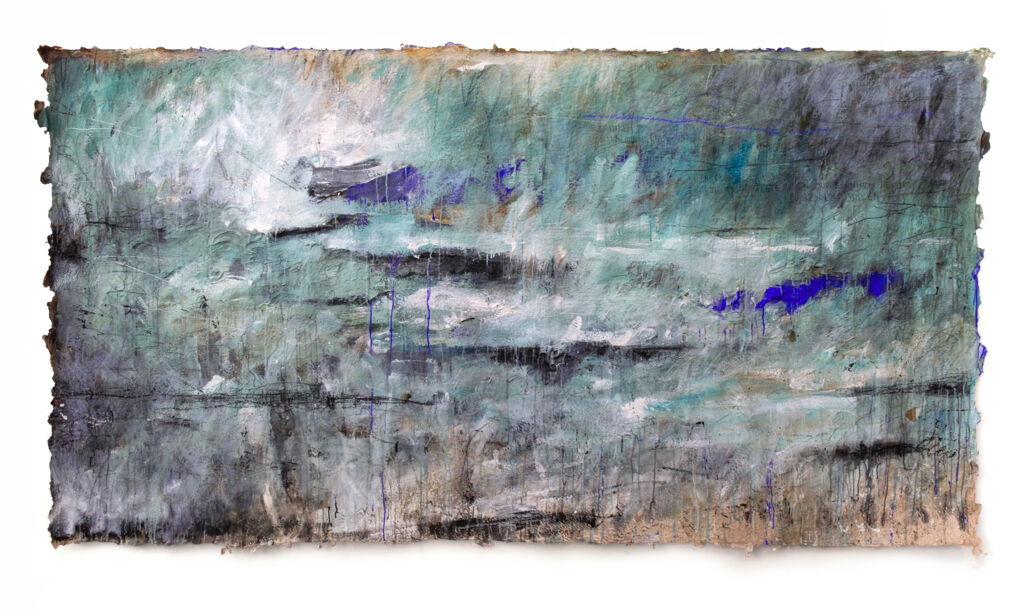
This is why I would like to make a proposal: in a more interesting sense, a work of art is "realistic" when it approaches reality in a special and especially intense way. That in Jakob Kirchmayr's pictures it is not immediately recognizable what they depict does not mean that they are not realistic. They are realistic insofar as they approach different realities, especially that of nature - or more precisely what Lois Weinberger once aptly called "the 'unfolding events' we have come to call nature" ("das Geschehen welches allgemein als Natur bezeichnet wird")
This formulation expresses a mistrust of overly simple words, which can be transferred to overly simple images. It is a mistrust that populists everywhere suppress when they demand and deliver simple explanations of the world. To quote a philosopher whom some of these populists have unjustly claimed for themselves: Friedrich Nietzsche. He writes:
"We believe we know something about the things themselves when we speak of trees, colors, snow, and flowers, and yet we possess nothing but metaphors of things, which do not correspond at all to their original essences."
The art of landscape
So is there no solution? Are we condemned always to speak, think, and draw past the world? No. There are systematic approaches. Many poems and other artworks are not mere figments and fantasies, but often attempts to create adequate images of particular objects, experiences, or phenomena.
But since there are so many realities around and within us, one can still paint Rouen Cathedral or a river today and make something new visible. And Jakob Kirchmayr's paintings and drawings do indeed show something new. They were created this summer in the studio, but they are based on concrete experiences - on journeys made on foot or, especially extensively and intensely, by kayak. This is important, because I believe it leads us to what is distinctive about these images of nature and shows how they differ from classical landscape representations.
Alois Riegl evoked these in 1899 in his text Mood as Content of Modern Art. The essential characteristic of modern art that appeals to mood, he wrote, is the far-sighted landscape. This gives the art historian "an indescribable feeling of bliss, calm, harmony." Why the distant view is so relieving for modern people, Riegl also describes:
"What is merciless struggle up close, appears to him from afar as peaceful coexistence, concord, harmony. Thus he feels redeemed and relieved of the oppressive weight that does not leave him for a single day of his common life."
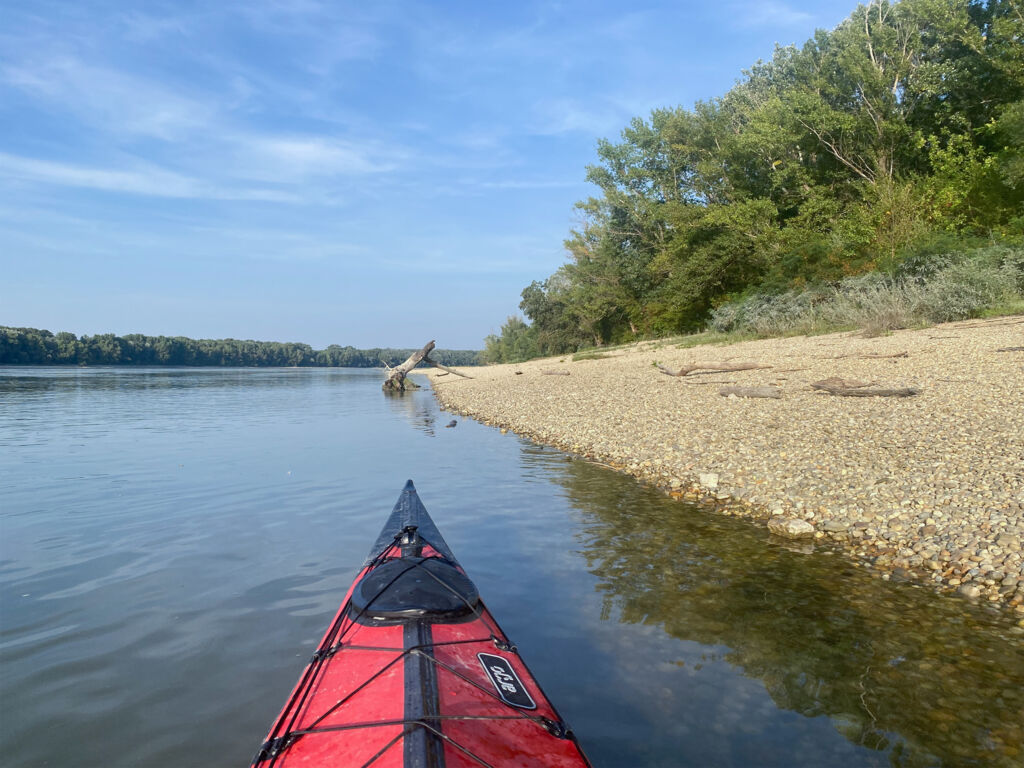
Thus we imagine the modern landscape painter like Caspar David Friedrich's wanderer: gazing down on the world from above, painting it from a safe distance. It is often said that modern landscape painting could only develop once humans no longer perceived themselves as part of a nature on which they depended, but could view it as a counterpart. But that is precisely what one cannot do when experiencing it by kayak or on foot. Then it is exactly the "incidentalities that disturb the basic law, that overgrow it" (Riegl) that become important.
An art that only captures visible surfaces - and keeps its distance - is an art that simplifies the world instead of grappling with its complexity. It is an art that makes the world into a stage on which humans can act with impunity, rather than bringing the natural world close to us, as Kirchmayr's art does. The long view may be necessary in the kayak as well, to see the rapids coming, but the close view is vital, so as not to puncture the boat on a rock. And on wild rivers, what is generally called the bank is not cultivated, but luxuriant: where plants and times, green sprouting and brown withering, present and past, overlap; a thorny, burning, jagged, broken, living tangle. It is wind-whipped, thorny branches. It is silver willows that have been devastated several times by floods and have put out new shoots and roots. It is an archaic, wild landscape - and one that holds hope for the regeneration of what humans have destroyed. In this way the recent drawings also connect with the message of the Lenten cloth that Kirchmayr designed for Vienna's Michaelerkirche in 2024.
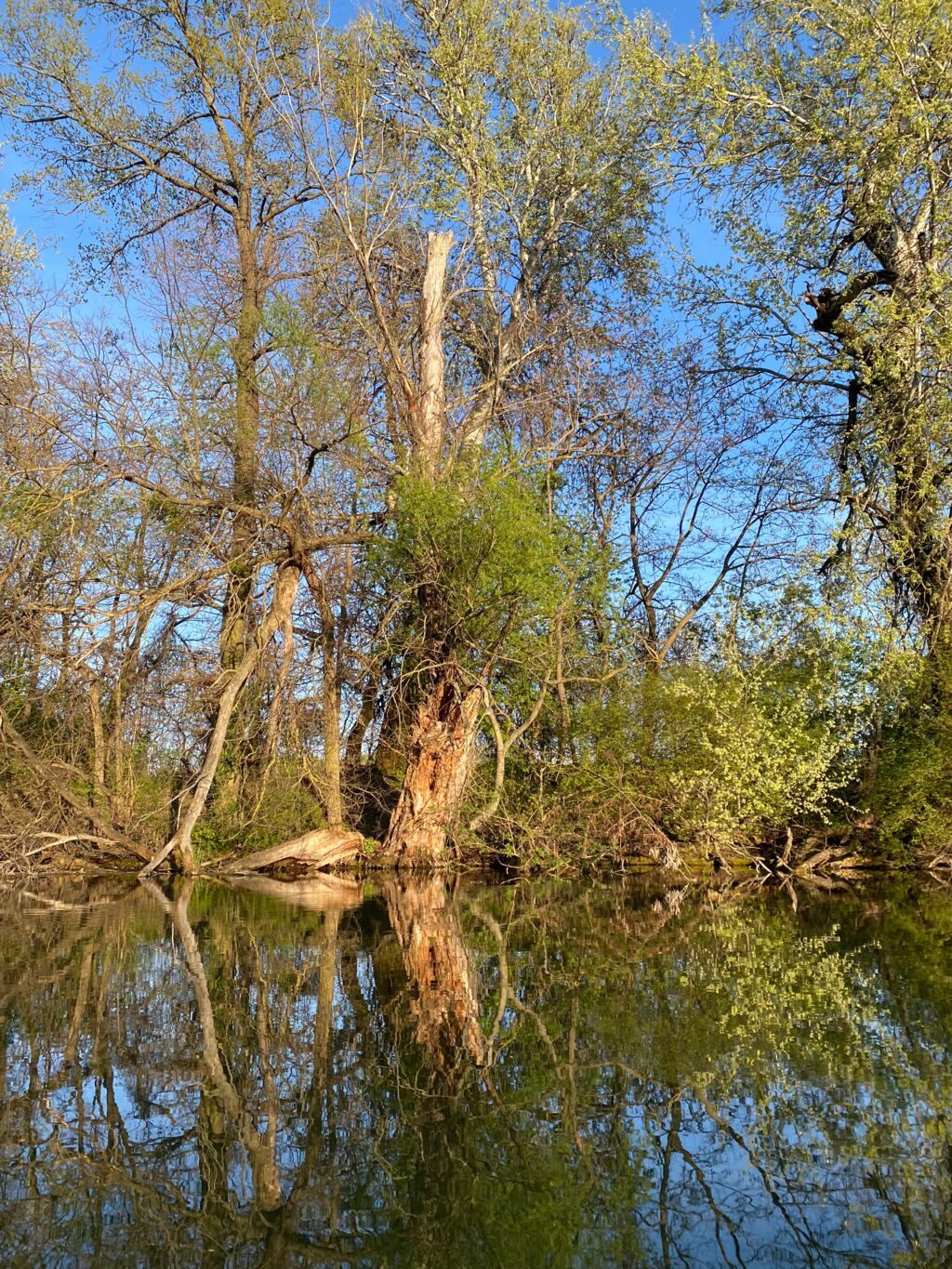
Exposing oneself to what happens
Jakob Kirchmayr devotes himself not (only) to landscape, but also to undergrowth. What we see in his exhibition Folds of Water are the works of an artist who exposes himself to nature instead of merely contemplating it.
These encounters he recalls in memory when he paints and draws. Krichmayr's pictures make clear that nature is not only an object of contemplation, but also a counterforce. There is always something beyond, instead of flattening the world from afar in order to map and dominate it. The layering of his works, in color and in overlapping strokes, reflects the impenetrability of the undergrowth - and thus a lived experience through nature.
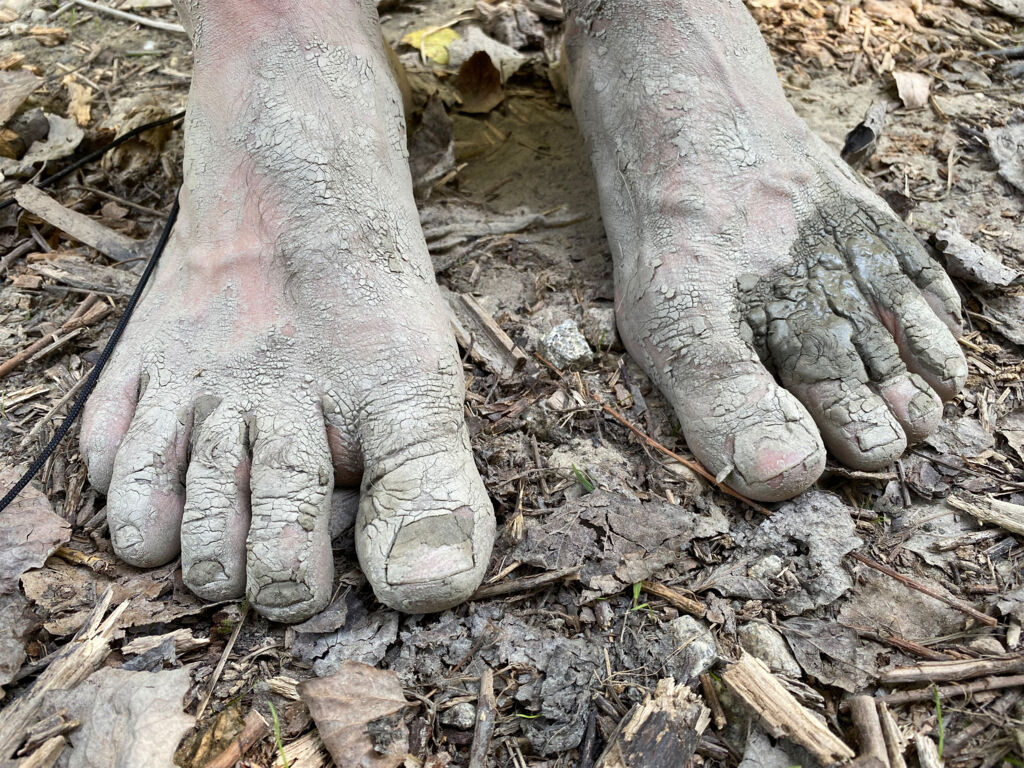
The energy of his experience also inscribes itself into the works. Kirchmayr rejects preliminary sketches, because he wants to preserve the raw immediacy of the first draft:
"I want the spontaneity to be in the actual work. There are no sketches of mine, but with the 'travel notes' series there is now a particularly sketch-like work!" - Jakob Kirchmayr
Thus, in our well-tempered rooms, we may partake in a living nature - the kind also known to the wanderer Nietzsche, who wrote: "Only thoughts that have been walked have value."
Fellow comrades in Kirchmayr's attempt to preserve the "unfolding events" and make it comprehensible for us are poets who search for words for their experience. Many of these quotations are inscribed in the pictures and enrich them with another voice and dimension of meaning. Particularly influential in recent months was the reading of the Syrian-Lebanese author Fuad Rifka, whose moods entered into the works. This is especially clear in the large painting Time, in which he quotes Rifka:
"...the seed has its time
and the thunder its own;
the wind has its time,
and the harvest too
has its time..."
Fuad Rifka
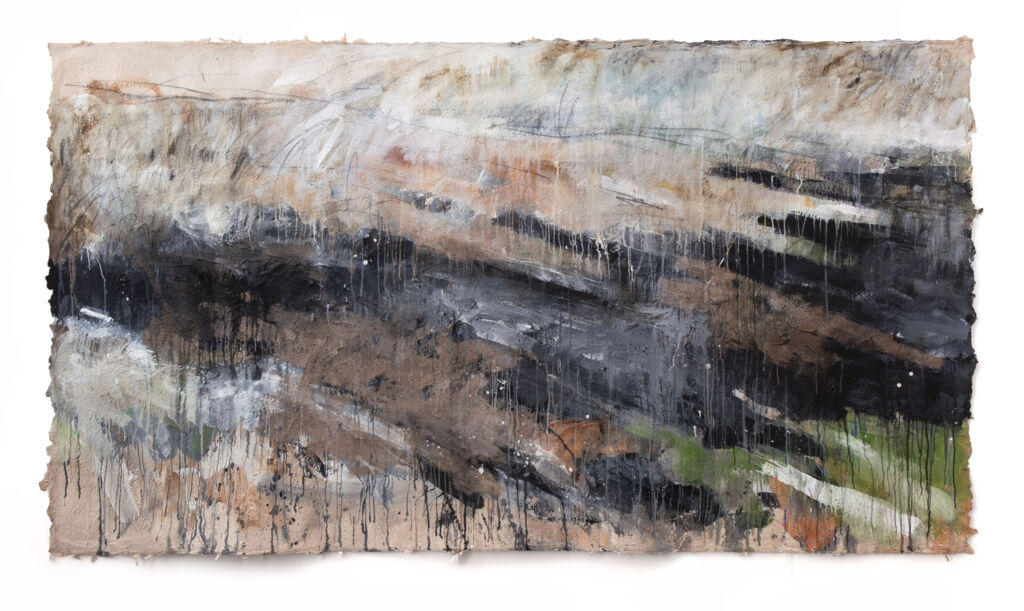
The sentences situate the representation in the context of existential reflections. The painting itself conveys a feeling of vastness, but leaves open whether it shows the sea, a river mouth, or perhaps a lake. This fits with Jannis Ritsos, who, in attempting to convey his experience, found the phrase "folds of water." As the title of the exhibition at Galerie Hilger, the quotation describes on the one hand the waves traversed and lived through, and on the other the folds that arise in papermaking or when paper in the studio becomes wet again and temporarily fragile. All this inscribes itself in traces into the paintings and drawings. Thus we too are activated as readers of traces when we follow the brush- and run-marks of watery glazes and in doing so recall the knowledge of our trace-reading ancestors.
I believe this has to do with the fact that the pictures not only convey a personal experience but become almost universal representations of a certain kind of experience of nature. This would not be possible without the deliberate indeterminacy of the depictions.
The power of indeterminacy
"This is blurry, you can delete it," we say - and thus condemn blurry images to disappearance. But the right degree of blurriness can also be a quality. An unfocused image of a person does not only represent that one individual, but enables various interpretations. Like concepts, the images grasp more of reality than any photograph, because:
"...just as surely as no leaf is ever exactly the same as another, just so surely is the concept 'leaf' formed through the arbitrary omission of individual differences, through a forgetting of what distinguishes." - Friedrich Nietzsche
In a similar way, images of nature such as Kirchmayr's can correspond to very different experiences and make possible different resonances. Yet they are not arbitrary - and the painting Time seems to show a great river or lake landscape. As one of the few works in the exhibition conceived in long view, it rightly forms the horizon. It immediately reminded me of another of Kirchmayr's intellectual companions, who wanted to grasp the portion of reality that is not merely visible: the Italian poet Giuseppe Ungaretti. So I would like to close with a poem, originally titled Cielo e Mare and now called Mattina:
"M'illumino d'immenso"
In Ingeborg Bachmann's translation:
"I illuminate myself through the immeasurable."

